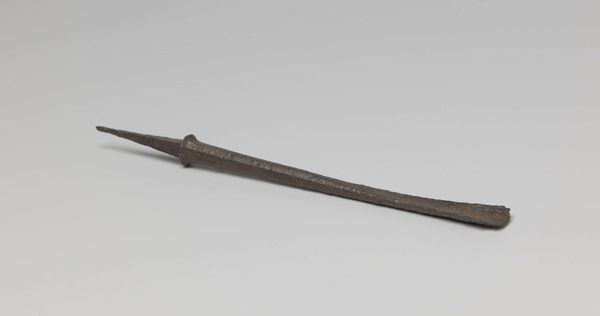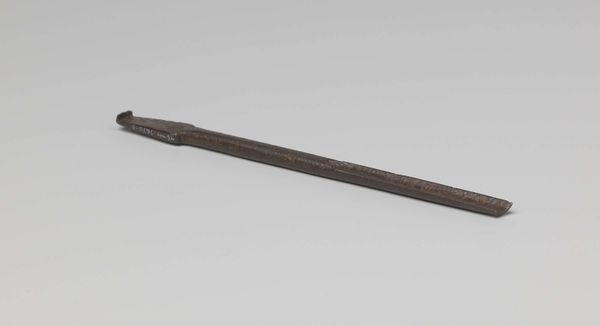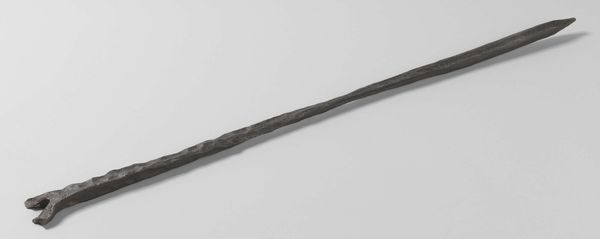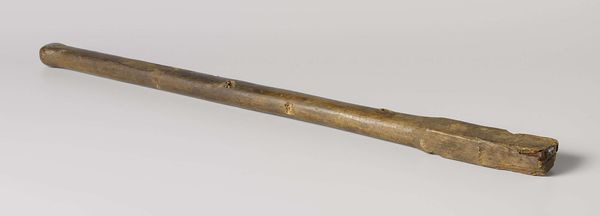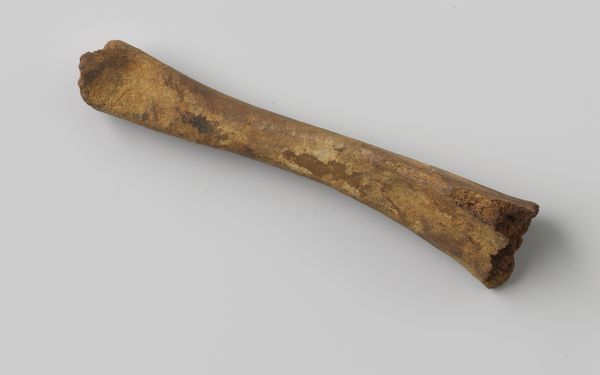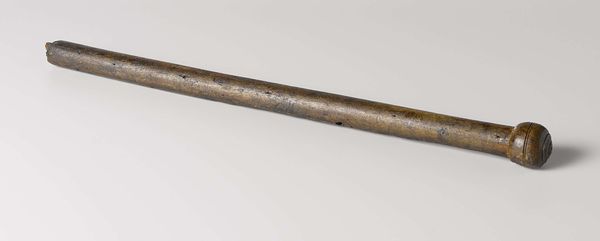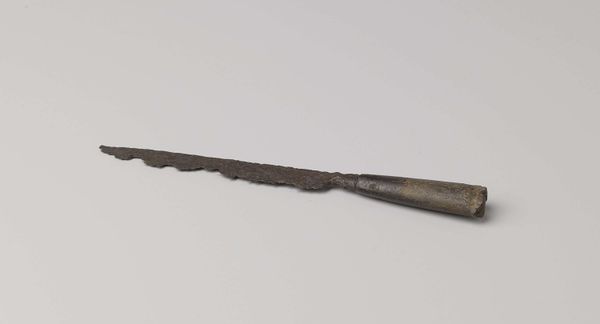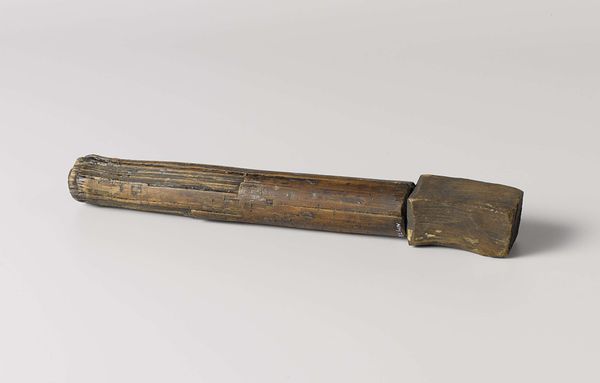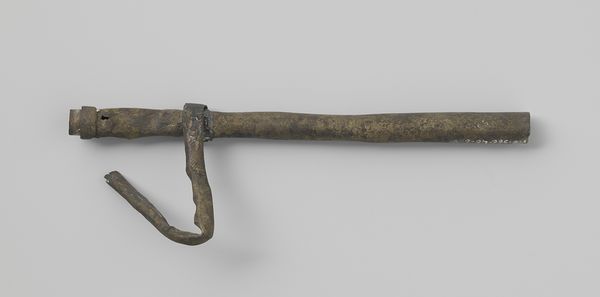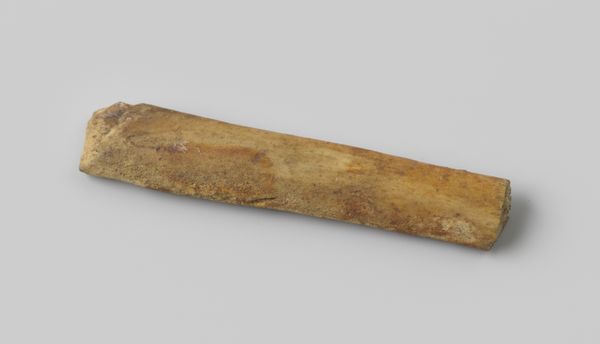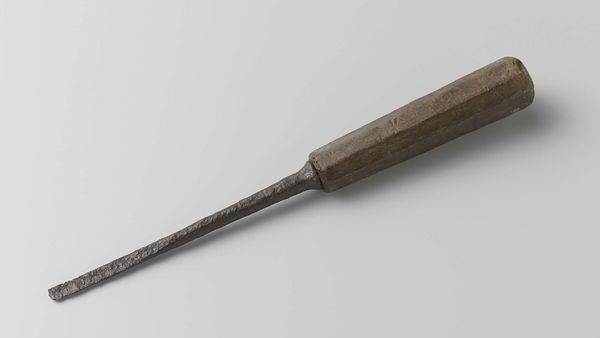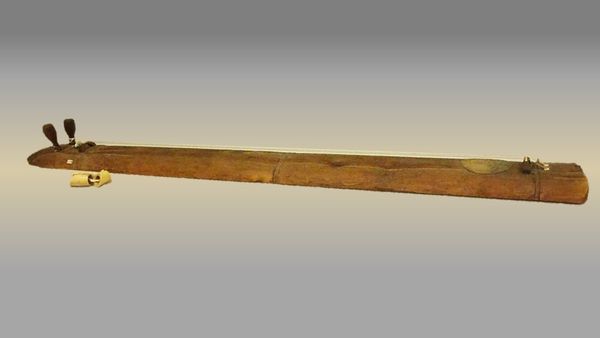
Natural Trumpet from the wreck of the Dutch East India ship Hollandia, made by Georg Friedrich Steinmetz 1700 - 1735
0:00
0:00
bronze, sculpture
#
baroque
#
sculpture
#
bronze
#
sculpture
Dimensions: height 67 cm, diameter 11.5 cm
Copyright: Rijks Museum: Open Domain
This is a brass trumpet made by Georg Friedrich Steinmetz, one of a family of instrument makers in Nuremberg, Germany. As a natural trumpet, meaning valveless, its sound would have been entirely dependent on the player’s skill. These instruments were constructed by specialist brass-smiths employing a combination of casting, hammering, and soldering. We can imagine a workshop filled with the sounds of metal being worked: heated, shaped, and polished. The trumpet was found on the wreck of the Hollandia, which sank off the Isles of Scilly in 1749 while in the service of the Dutch East India Company. This tells us something of its intended purpose. Likely it was employed to rally laborers on board, or to signal between ships. Considering its intended function, it offers a glimpse into the world of maritime trade and labor in the 18th century. The skilled handcraft required to produce this object underscores the entanglement of artistic production with the realities of global commerce.
Comments
No comments
Be the first to comment and join the conversation on the ultimate creative platform.

